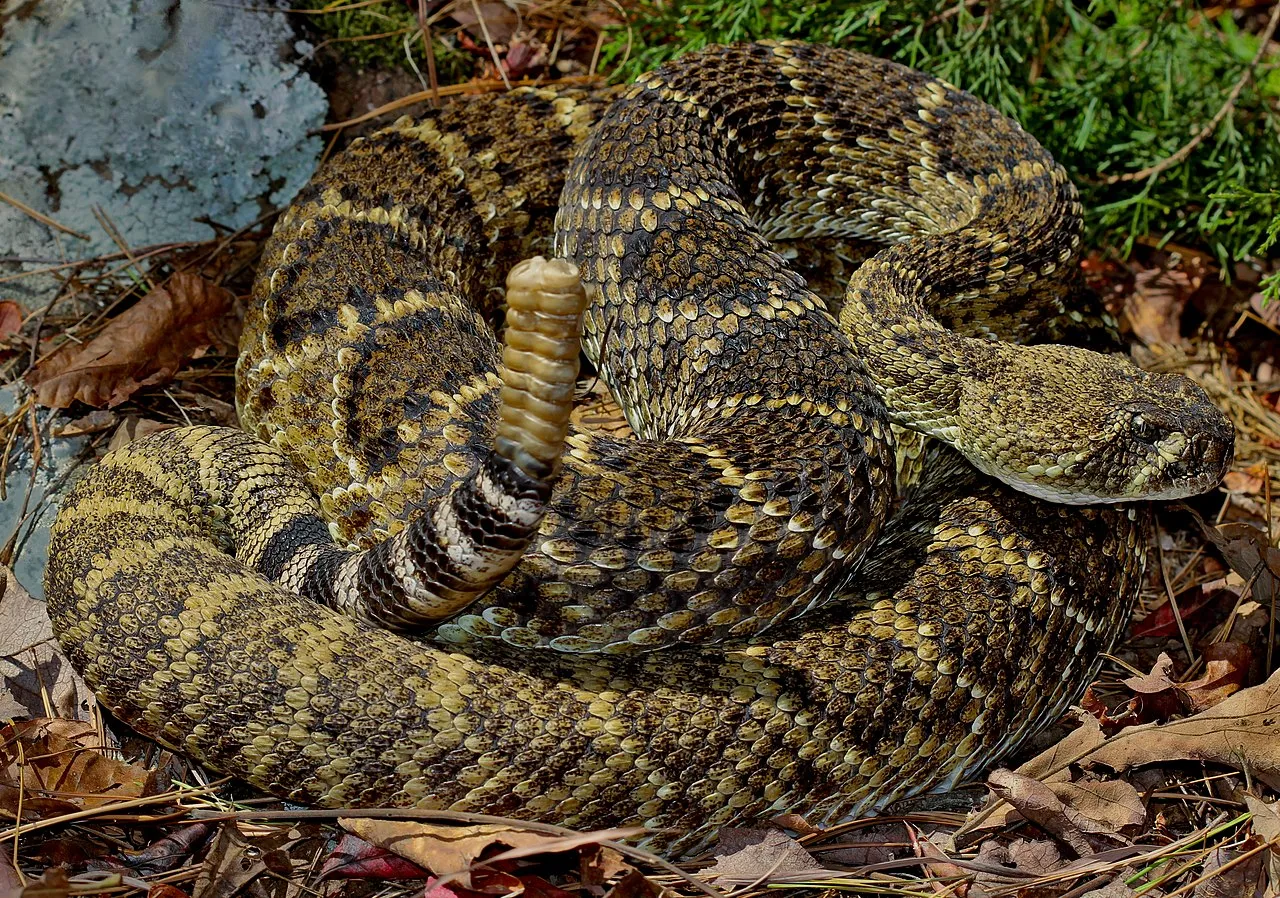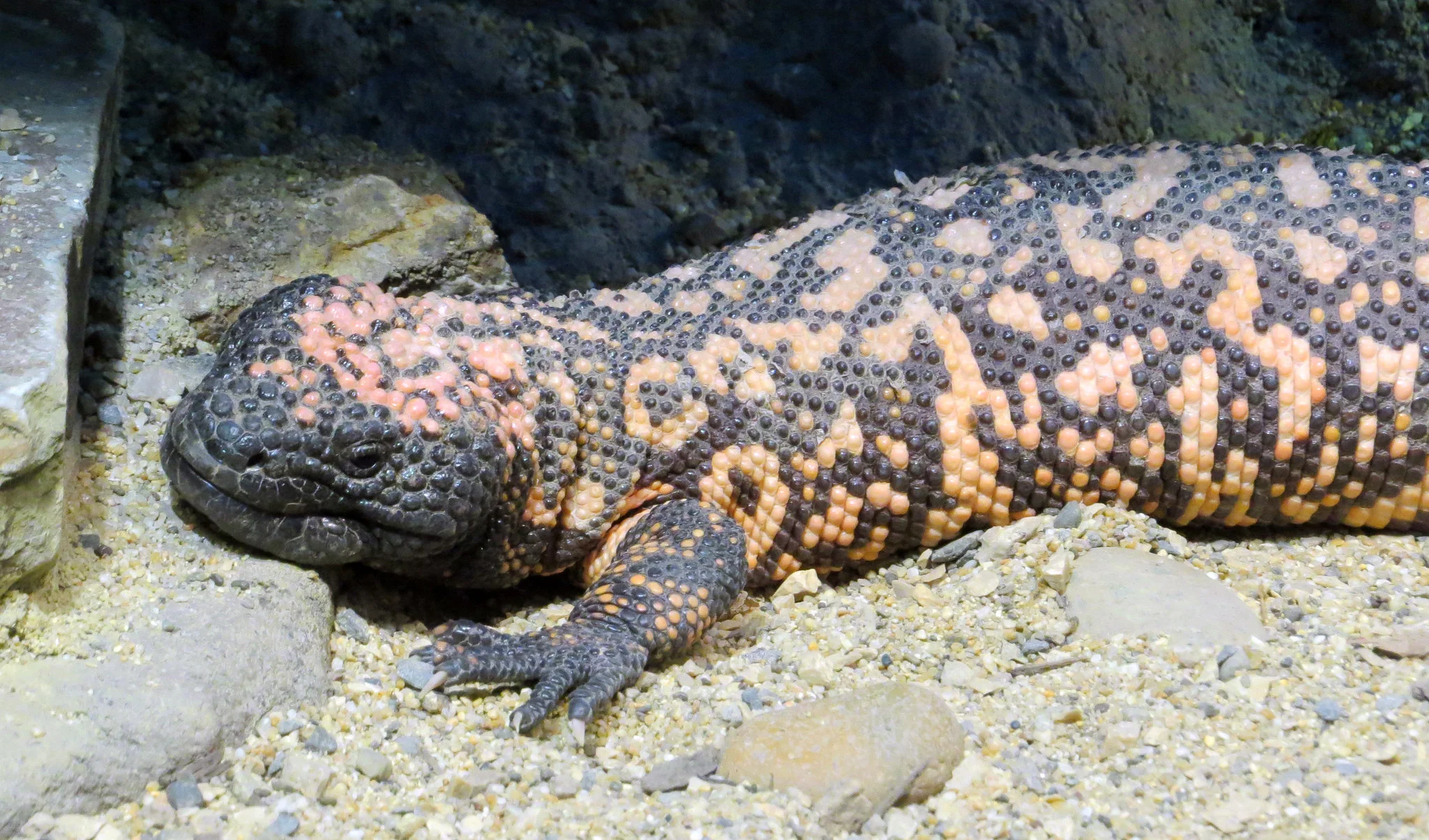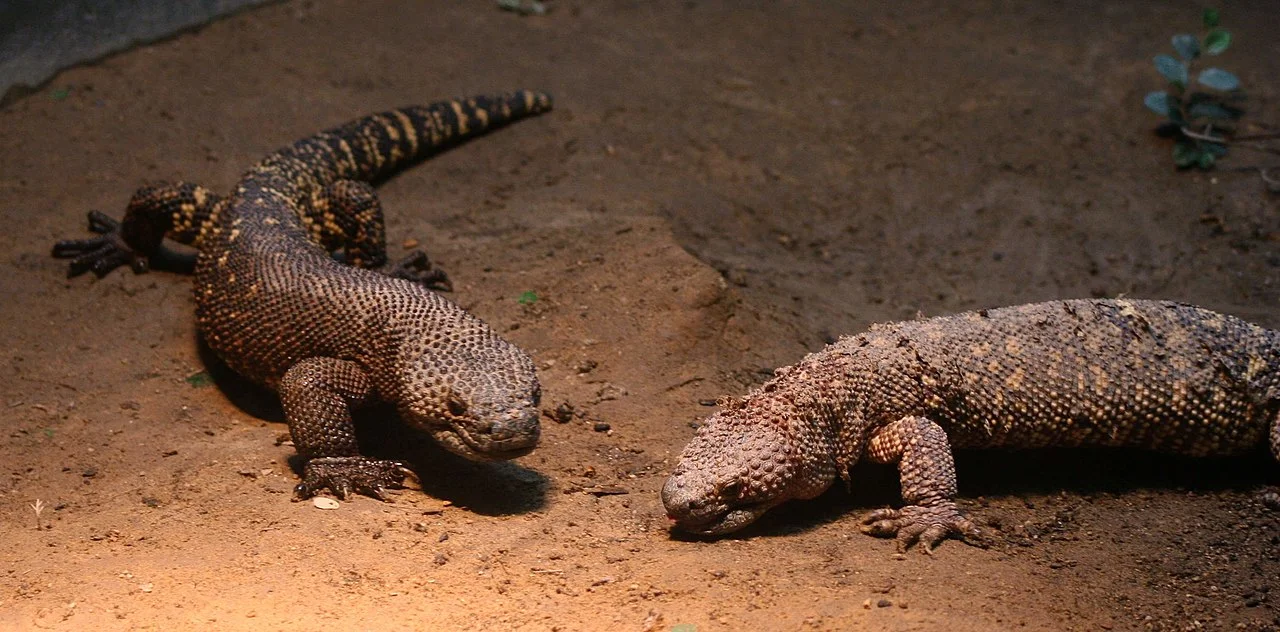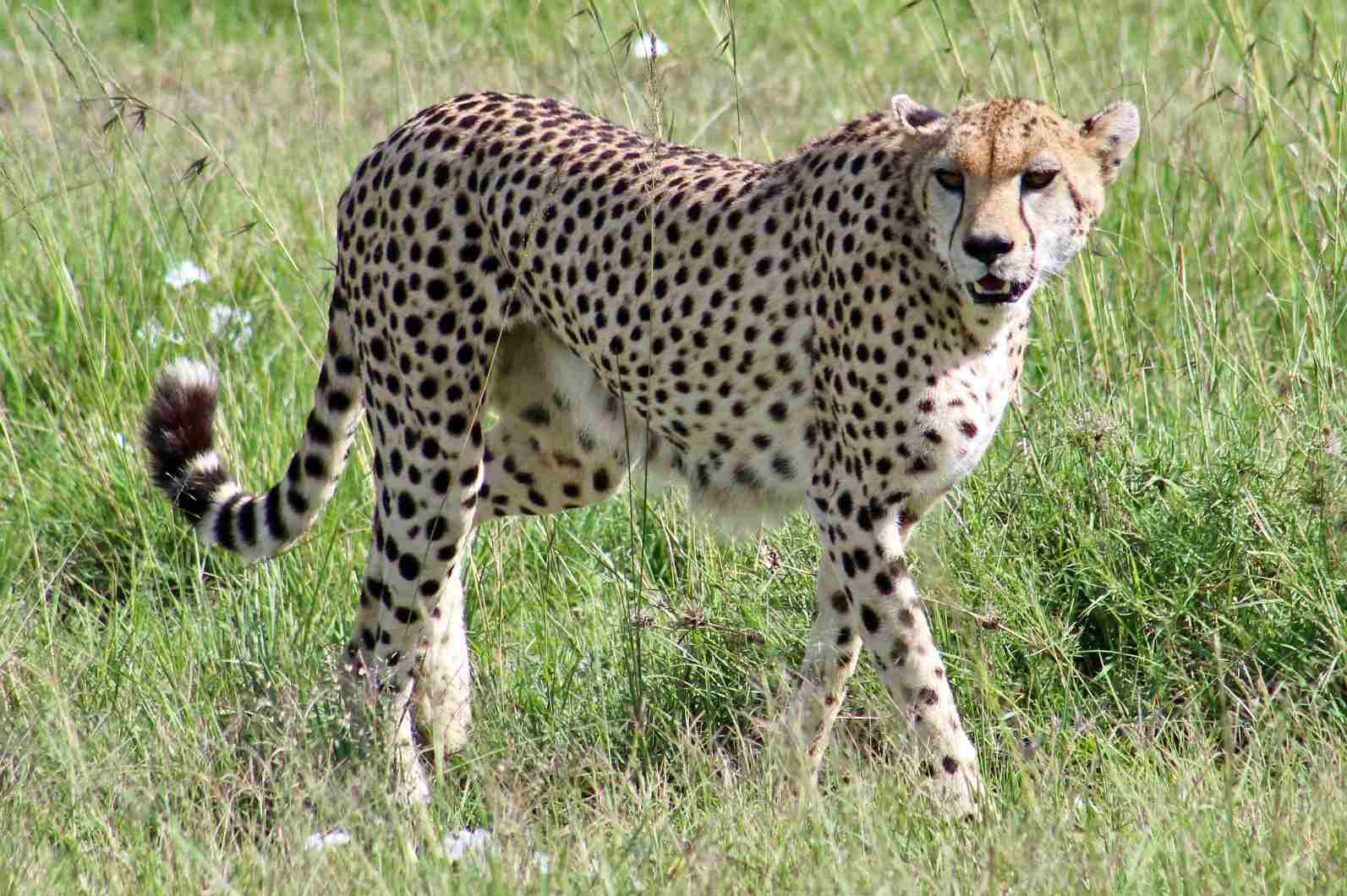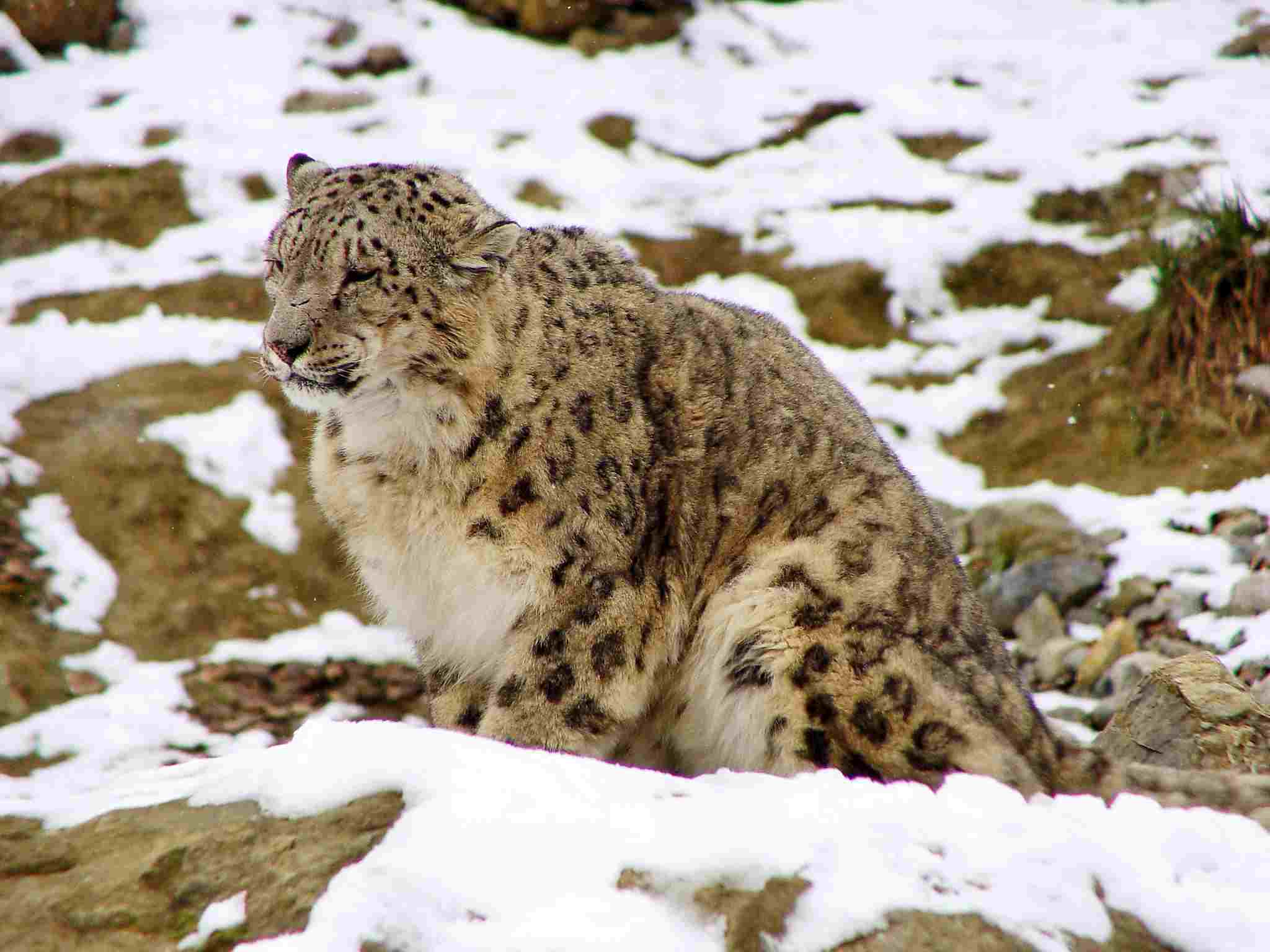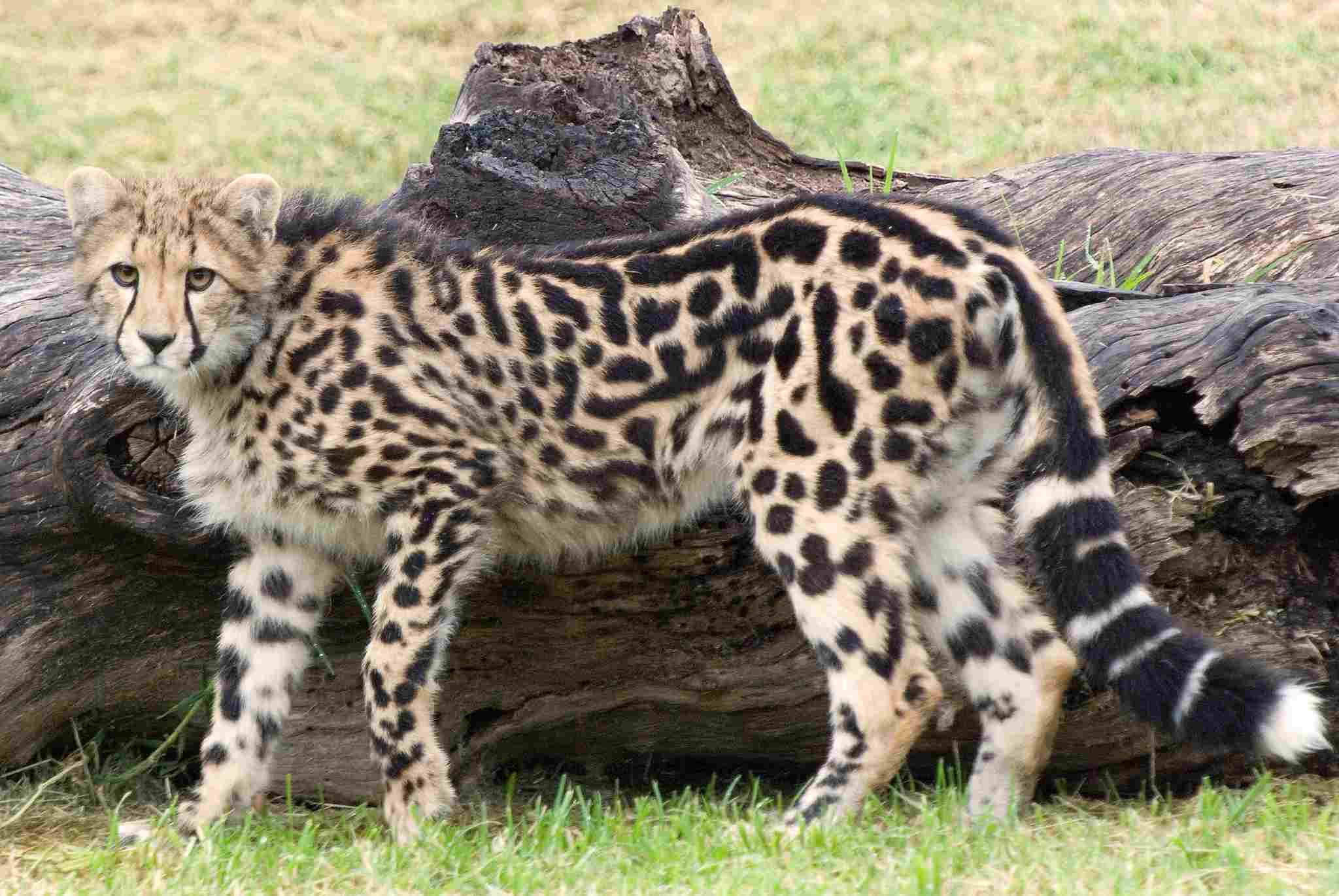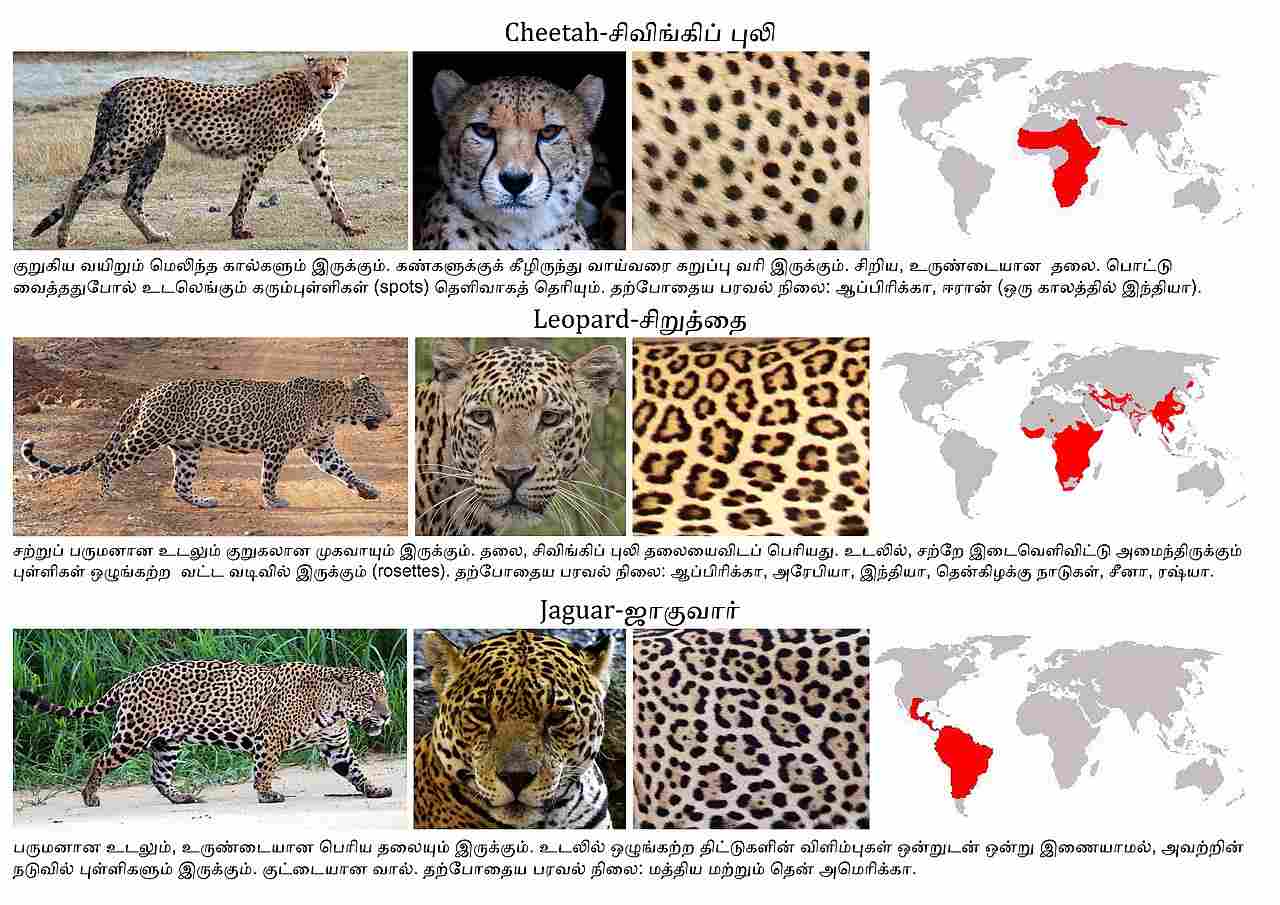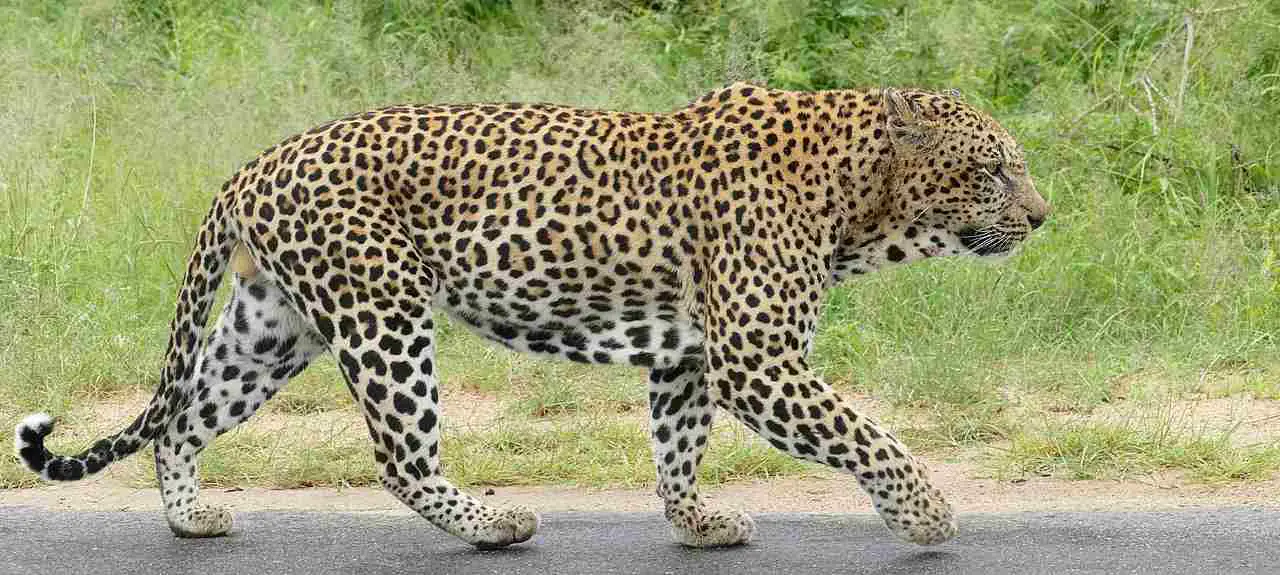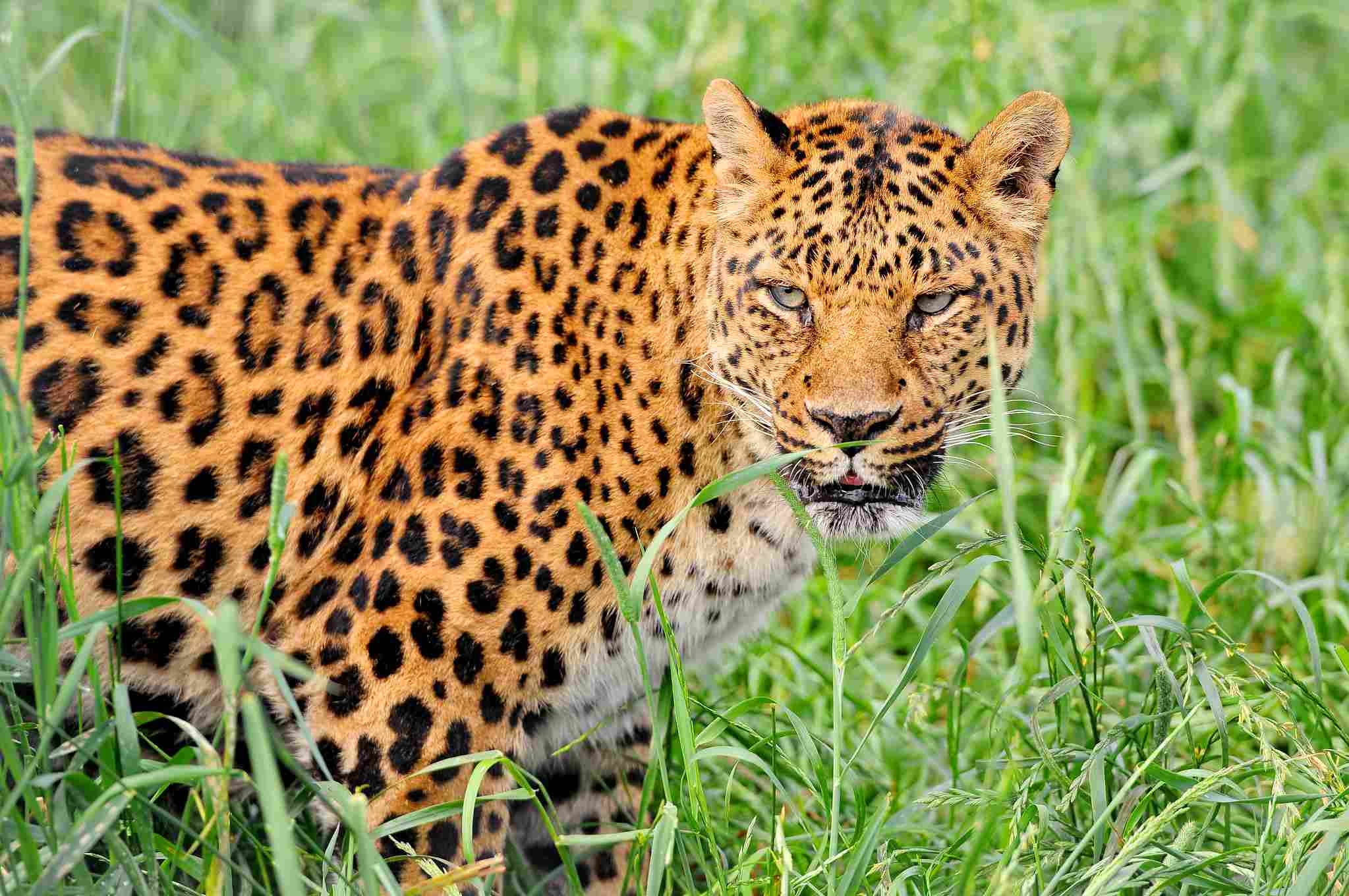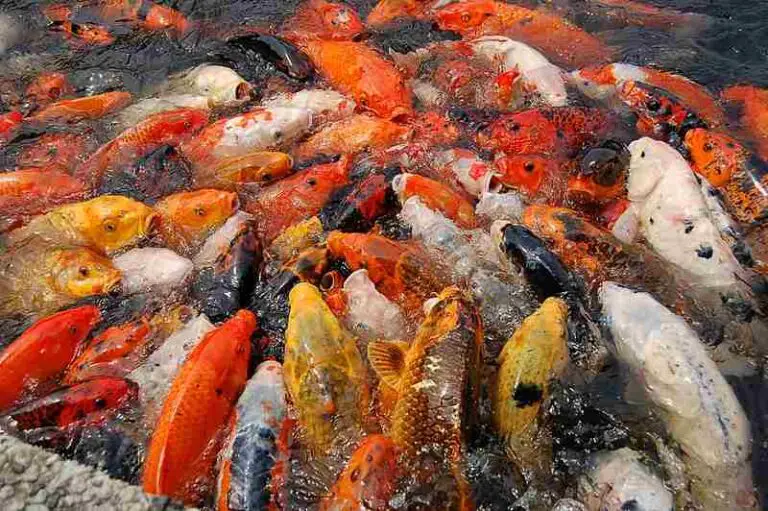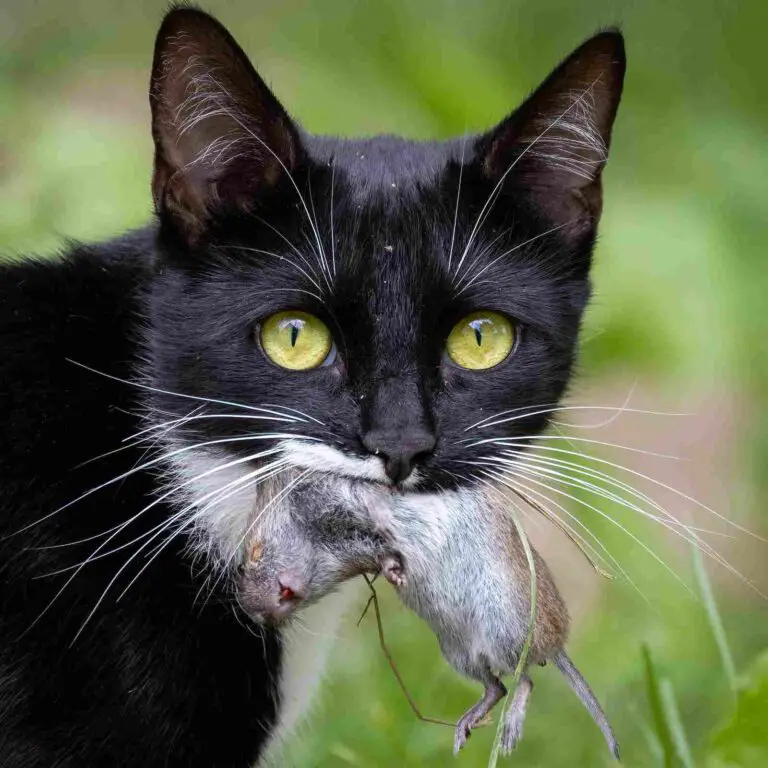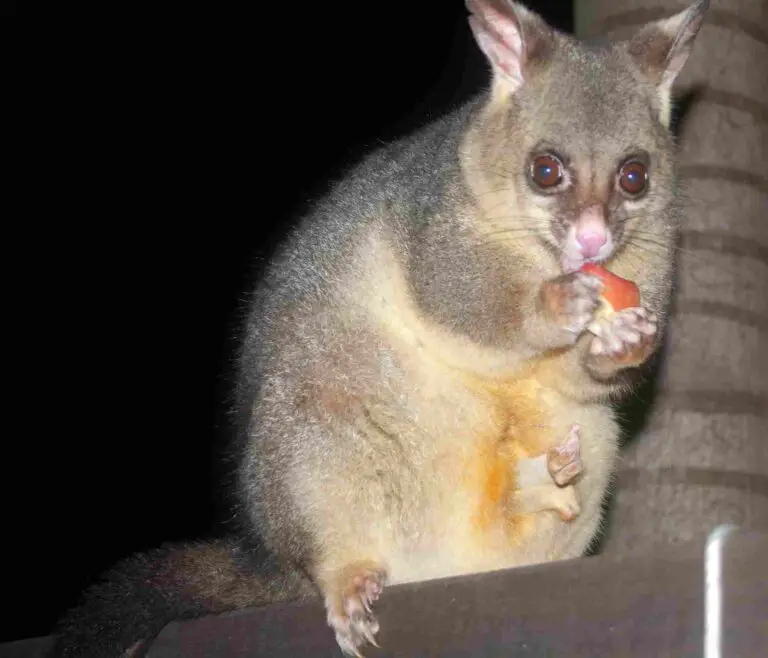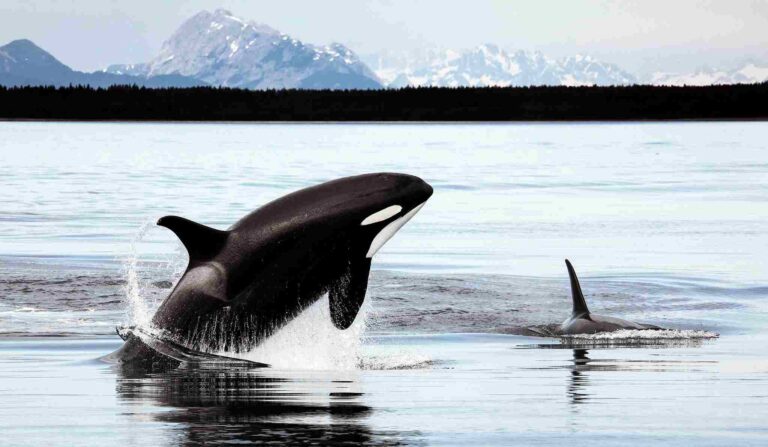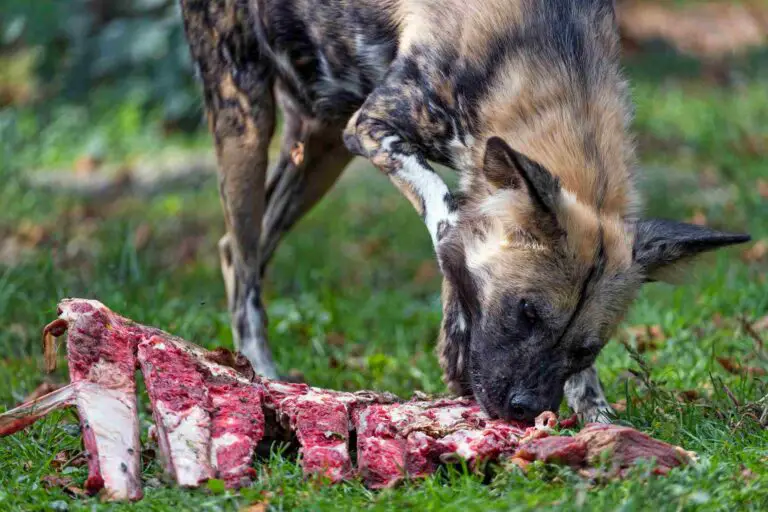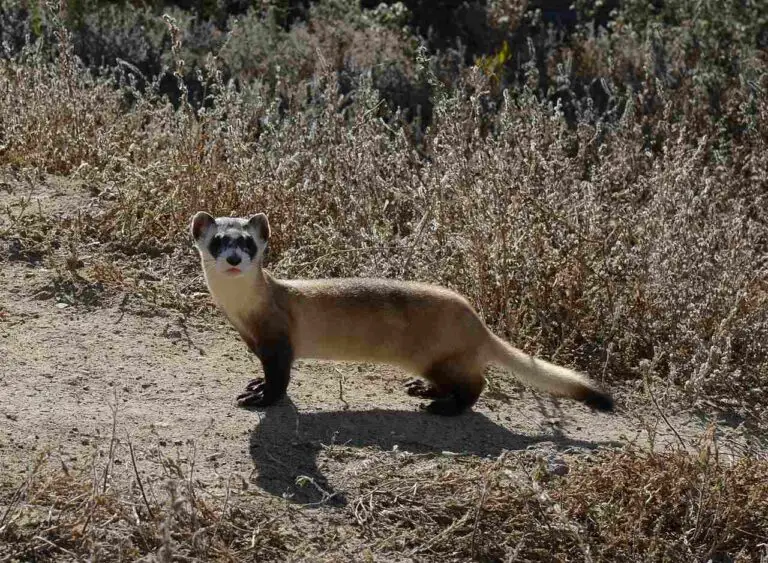27 Examples of Tertiary Consumers in Ecosystems and Food Chains
Examples of tertiary consumers are; leopard, jaguar, hawk, eagle, lynx, boa constrictor, cheetah, Gila monster, Article wolf, and bottlenose dolphin; which can be found in forests, grasslands, deserts, tundras, oceans, and their various food chains.
Examples of Tertiary Consumers in a Forest
Examples of tertiary consumers in a forest are; leopard, jaguar, boa constrictor, eagle, cougar, and lynx. These animals may occur across various geographic regions, where they play the role of high-level predatory consumers.
1). Leopard
Leopards serve as tertiary consumers in forest ecosystems. As high-level predatory consumers, they play a crucial role in maintaining the balance of the food chain. With their sleek and powerful bodies, leopards are well-equipped to hunt and thrive in the forest environment.
These felines are known for their incredible agility and stealth. Their spotted fur helps them blend seamlessly into the dappled sunlight and shadows of the forest, making them excellent ambush predators. Leopards have a wide range of prey, including smaller mammals like deer, monkeys, and rodents. They are also known to hunt larger animals such as wild boars and even young elephants.
Leopards are solitary animals, preferring to roam and hunt alone. They are highly adaptable and can thrive in various forest habitats, from dense rainforests to dry woodlands. Their ability to climb trees is another unique characteristic that sets them apart from other big cats. Leopards often drag their prey up into the safety of the branches, away from scavengers and potential competitors.
In the forest ecosystem, leopards play a vital role in controlling the population of herbivores. By preying on these animals, leopards help regulate their numbers and prevent overgrazing, which can have detrimental effects on the vegetation and overall ecosystem vitality.
2). Jaguar
Jaguars are another example of tertiary consumers in forest ecosystems. With their powerful jaws and sharp claws, jaguars are formidable predators that play a crucial role in maintaining the balance of the forest food chain.
In the dense forest environment, jaguars rely on their keen senses and stealthy nature to hunt their prey. Their spotted fur helps them blend seamlessly into the dappled sunlight and shadows, allowing them to stalk their prey undetected. Jaguars have a diverse diet, which includes a variety of animals such as deer, tapirs, capybaras, and even caimans.
One of the unique characteristics of jaguars is their ability to swim. They are excellent swimmers and often take advantage of rivers and streams to hunt for fish and turtles. This adaptability gives them an advantage in their forest habitat, as they can access different food sources.
Jaguars are also solitary animals, marking their territories with scent markings and vocalizations.
3). Boa Constrictor
Boa constrictors are reptilian examples of tertiary consumers in forest ecosystems. These large, non-venomous snakes play a crucial role in the food chain by preying on a variety of animals. With their powerful bodies and significant strength, boa constrictors are able to overpower their prey and squeeze them to death.
Boa constrictors primarily feed on small to medium-sized mammals, such as rodents, birds, and even monkeys. They are ambush predators, patiently waiting for their prey to come within striking distance before launching a swift attack. Once they have captured their prey, boa constrictors use their muscular bodies to constrict and suffocate them.
These snakes have a unique adaptation that allows them to consume large meals. Boa constrictors have highly flexible jaws and stretchy ligaments, which enable them to swallow prey much larger than their own head. After a successful hunt, they may not need to eat again for several weeks or even months.
Boa constrictors are also known for their impressive camouflage. Their patterned scales help them blend into their forest surroundings, making it easier for them to hide and surprise their prey. This ability to remain hidden is important for their survival as they rely on stealth to catch their meals.
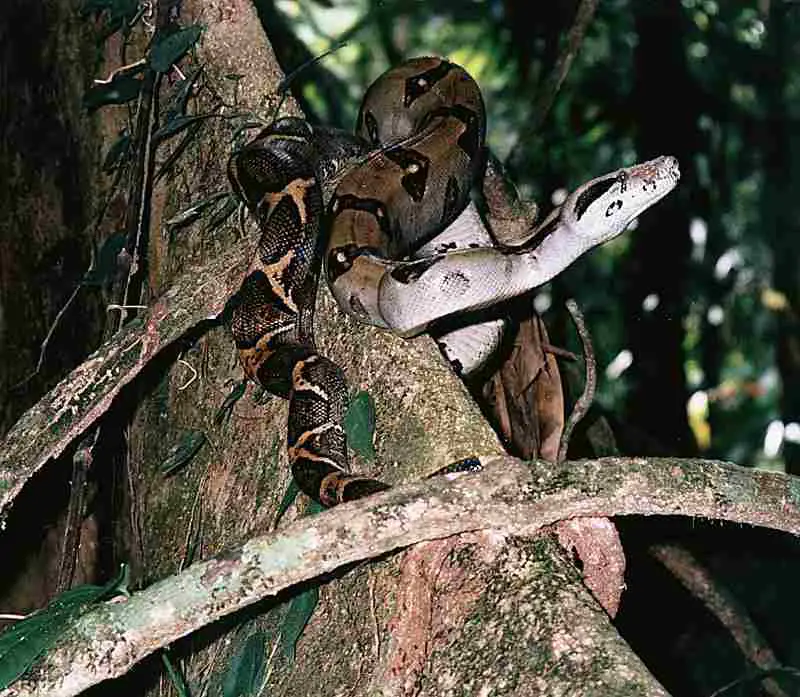
4). Eagle
Eagles are large birds of prey and are considered tertiary consumers in forest ecosystems. With their keen eyesight and powerful wings, eagles are skilled hunters capable of capturing a wide range of prey.
One of the primary food sources for eagles in the forest is fish. They are well-known for their ability to swoop down from great heights and snatch fish from the water’s surface with their sharp talons. Eagles also feed on small mammals, such as monkeys, sloths, rabbits and squirrels, as well as birds like ducks and pigeons.
Eagles are apex predators, meaning they have no natural predators themselves. Their strong beaks and talons allow them to tear apart their prey and consume it efficiently. These birds have a keen sense of sight, enabling them to spot potential prey from incredible distances. They can soar high in the sky, using thermal updrafts to conserve energy while searching for food.
5). Cougar
The cougar, also known as the mountain lion, is a fascinating example of a tertiary consumer in forest ecosystems.
Using their adaptive features such as powerful limbs and sharp claws, cougars are capable of taking down a variety of prey. Their primary diet consists of herbivores such as deer, elk, and moose. Cougars are stealthy predators, relying on their agility and camouflage to stalk their prey before launching a swift and deadly attack.
Cougars are solitary animals, preferring to hunt alone and establish their territories in the dense forests. They are known for their ability to leap great distances and climb trees with ease, allowing them to ambush their prey from above. This adaptability and versatility make them formidable hunters in their environment.
6). Lynx
The lynx is another example of a tertiary consumer in forest ecosystems. Identified by distinctive tufted ears and spotted coat, the lynx is a skilled predator. It primarily feeds on smaller mammals such as rabbits, hares, and rodents.
The lynx is well adapted to its forest habitat, with its keen senses and stealthy hunting techniques. Its sharp claws and powerful hind legs allow it to pounce on its prey with precision and speed. The lynx is also an excellent climber, using its strong limbs to navigate through the trees and ambush its prey from above.
Like the cougar, the lynx is a solitary animal, preferring to hunt alone and establish its territory in the dense forests. It has a wide range of habitats, including boreal forests and mountainous regions. The lynx population is highly dependent on the availability of its prey, and its numbers can fluctuate based on the abundance of food.
Examples of Tertiary Consumers in a Grassland
Examples of tertiary consumers in a grassland are; cheetah, spotted hyena, hawk, vulture, and lion. Other predatory animals like African wild dogs are not in this category because they are smaller than, and preyed upon by tertiary consumers. Therefore these lower predators are secondary consumers.
1). Cheetah
Cheetahs are fascinating creatures that serve as tertiary consumers in grassland ecosystems. As high-level predators, they play a crucial role in maintaining the balance of the food chain. With their incredible speed and agility, cheetahs are well-equipped to hunt down their prey.
In the grasslands, cheetahs primarily feed on herbivores such as gazelles and impalas. Their slender bodies and long legs allow them to reach impressive speeds of up to 60 miles per hour in just a few seconds, making them the fastest land animals on Earth. This incredible speed enables cheetahs to chase down their prey with remarkable precision.
Cheetahs possess sharp claws and powerful jaws, which they use to bring down their prey quickly and efficiently. Once they have caught their meal, cheetahs consume the flesh, leaving behind only the bones and other inedible remnants of their feast.
By preying on herbivores, cheetahs help control their population and prevent overgrazing in grassland ecosystems. This, in turn, ensures the health and sustainability of the entire ecosystem.
2). Spotted Hyena
Spotted hyenas are examples of tertiary consumers in grassland ecosystems. These adaptable mammals play a key role in the food chain, as skilled hunters and scavengers.
In grasslands, spotted hyenas primarily feed on a variety of prey, including wildebeests, zebras, and antelopes. They have a unique hunting strategy, often working together in large groups called clans to take down larger animals. Their strong jaws allow them to crush bones and consume every part of their prey, leaving nothing wasted.
Spotted hyenas also play an important role in maintaining the balance of the ecosystem by scavenging on carcasses left behind by other predators. This helps prevent the spread of diseases and ensures the efficient recycling of nutrients.
3). Hawk
Hawks are another example of tertiary consumers in grassland ecosystems. These majestic birds of prey play a crucial role in maintaining the balance of the food chain. With their keen eyesight and powerful talons, hawks are skilled hunters, feeding on a variety of small mammals, reptiles, and birds.
In grasslands, hawks use their exceptional aerial abilities to soar high above the open plains, scanning for potential prey. Once they spot their target, they swoop down with incredible speed and accuracy, capturing their prey with their sharp talons.
As tertiary consumers, hawks contribute to the regulation of populations of smaller animals in the grassland ecosystem. By preying on herbivores and smaller carnivores, they help control their numbers, preventing overpopulation and resource depletion.
4). Vulture
Vultures are often difficult to place in a distinct category within the food chain. However, they can be considered tertiary consumers because they often scavenge on the carcasses of secondary consumers. In grassland ecosystems, vultures play an important role as tertiary consumers. They primarily feed on the remains of animals that have already been killed by other predators or have died naturally.
Using their keen sense of smell, vultures can locate carcasses from great distances. Once they find a carcass, they use their powerful beaks and sharp talons to tear through the tough skin and access the meat. By consuming the remains of other animals, vultures help to clean up the environment and prevent the spread of diseases.
As tertiary consumers, vultures contribute to the overall balance of the grassland ecosystem by recycling nutrients and reducing the risk of disease outbreaks. Their scavenging behavior ensures that no resources go to waste and helps to maintain the health and stability of the ecosystem.
5). Lion
The lion is a prime example of a tertiary consumer in grassland ecosystems. With its powerful build and sharp hunting skills, the lion can even prey on other tertiary consumers such as the spotted hyena and cheetah. As a top predator, the lion plays a crucial role in maintaining the balance of the grassland food chain.
Lions are known for their cooperative hunting behavior, often working together in groups called prides to take down larger prey. Their strong jaws and sharp teeth allow them to tear through the flesh of their prey, providing them with the necessary nutrients to survive.
In addition to hunting other tertiary consumers, lions can also scavenge on the remains of carcasses left behind by other predators.
Examples of Tertiary Consumers in a Desert
Examples of tertiary consumers in a desert are; coyote, lappet-faced vulture, African golden wolf, desert lynx, Gila monster, and fox.
1). Coyote
The coyote is an example of a tertiary consumer in a desert ecosystem. While it is primarily known as a secondary consumer in larger ecosystems like forests, where it shares its habitat with larger predators like wolves and cougars, the coyote plays an active role as a tertiary consumer in the desert.
In the harsh and arid environment of the desert, the coyote relies on its adaptability and resourcefulness to survive. It preys on smaller animals such as rodents, reptiles, and insects, which are themselves secondary consumers in the food chain. By feeding on these lower consumers, the coyote helps to regulate their populations and maintain the balance of the desert ecosystem.
The coyote’s ability to thrive in the desert is a testament to its resilience and ability to adapt to challenging conditions. Its diet and hunting strategies have evolved to suit the unique characteristics of the desert environment. By consuming other animals, the coyote not only sustains itself but also contributes to the continuity of the desert ecosystem.
2). Lappet-faced Vulture
The Lappet-faced Vulture is another example of a tertiary consumer in a desert ecosystem. This large bird of prey plays a crucial role in maintaining the balance of the desert food chain.
The Lappet-faced Vulture feeds on the carcasses of dead animals, including those of other consumers in the food chain.
By scavenging on these remains, the vulture helps to prevent the spread of diseases and ensures that the desert ecosystem remains healthy. Additionally, the Lappet-faced Vulture’s feeding habits contribute to the recycling of nutrients, as it consumes the flesh and bones of the deceased animals.
This process helps to enrich the soil and support the growth of vegetation in the desert. The Lappet-faced Vulture’s role as a tertiary consumer highlights the interconnectedness of all organisms in the ecosystem and emphasizes the importance of each species in maintaining ecological balance.
3). African Golden Wolf
The African Golden Wolf is a fascinating example of a tertiary consumer in a desert ecosystem. This medium-sized carnivore plays a crucial role in the food chain of the desert.
With its sharp teeth and keen senses, the African Golden Wolf hunts and feeds on smaller animals like rodents and reptiles. By preying on these smaller consumers, the wolf helps to control their population and maintain the balance of the ecosystem.
Additionally, the African Golden Wolf’s feeding activity contributes to the transfer of energy and nutrients within the desert food web. As it consumes its prey, the wolf absorbs the energy stored in their bodies, allowing it to survive and thrive in the harsh desert environment.
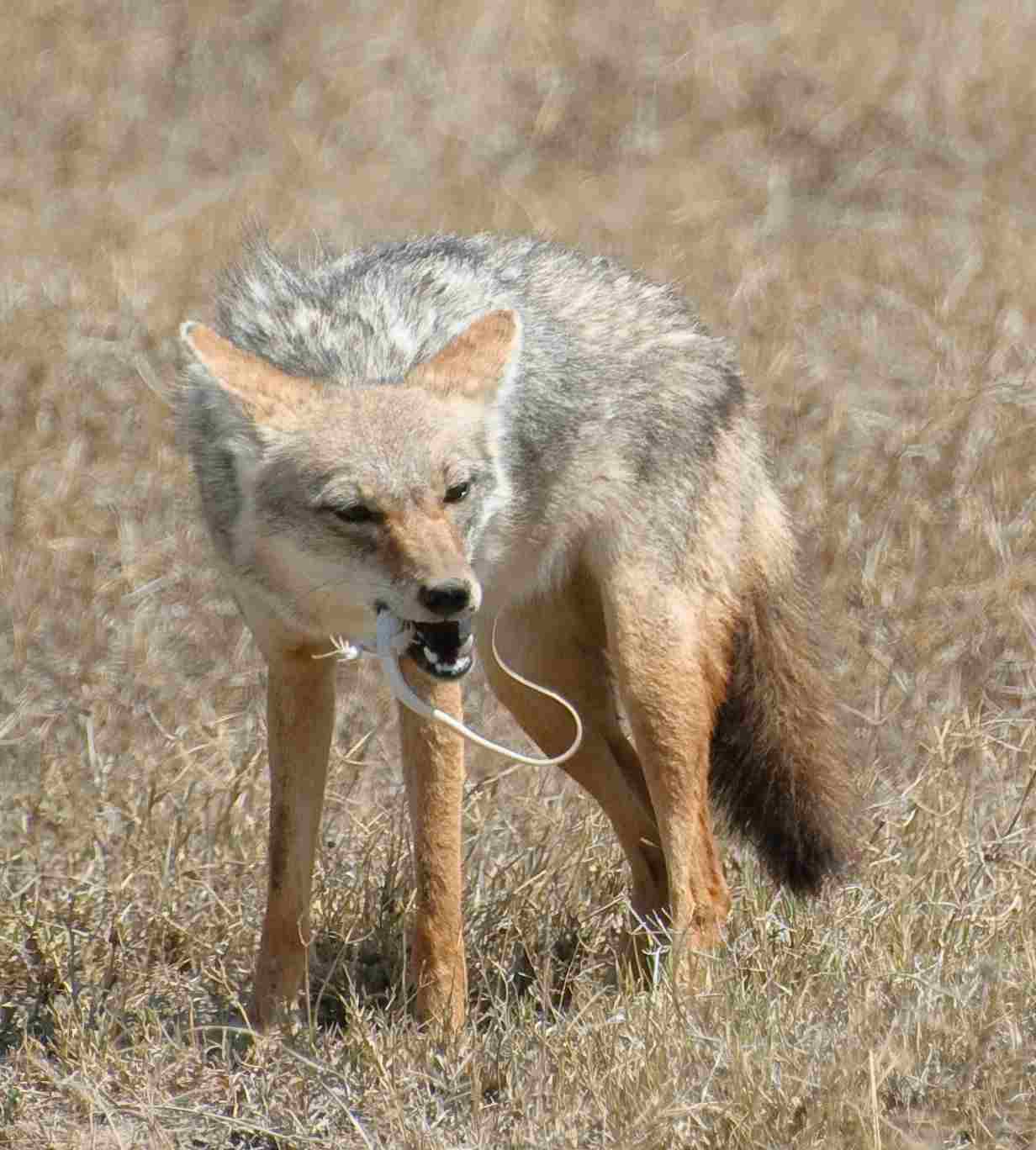
4). Desert Lynx
The Desert Lynx is a fascinating example of a tertiary consumer in a desert ecosystem. This medium-sized feline plays a vital role in maintaining the delicate balance of the desert food chain, and has no natural predators above it.
With its claws, teeth, and agility, the Desert Lynx hunts and preys upon smaller animals such as rodents and birds. By controlling the population of these smaller consumers, the lynx helps to regulate the ecosystem and prevent resource depletion.
The Desert Lynx’s diet consists mainly of small mammals, which provides it with the necessary energy to survive in the harsh desert environment. As a tertiary consumer, the lynx obtains its energy by consuming other consumers, effectively transferring energy and nutrients through the desert food web.
In addition to its role as a predator, the Desert Lynx also contributes to the overall biodiversity of the desert ecosystem.
5). Gila Monster
The Gila Monster is a reptilian example of a tertiary consumer in the desert ecosystem. This venomous lizard is instrumental in maintaining the connectivity of the desert food web. With its unique adaptations, the Gila Monster is able to survive in the harsh desert environment.
As a tertiary consumer, the Gila Monster feeds on smaller animals such as rodents, birds, and eggs. Its venomous bite immobilizes its prey, allowing the Gila Monster to consume them at its leisure. By controlling the population of these smaller consumers, the Gila Monster helps to regulate the ecosystem and prevent overpopulation.
The Gila Monster’s diet consists mainly of protein-rich prey, which provides it with the necessary energy to survive in the desert. Its slow metabolism allows it to go for long periods without food, making it well-suited for the desert’s unpredictable food availability.
6). Fox
The fox is another example of a tertiary consumer in the desert ecosystem. This mammal is known for its adaptability and hunting skills, with which the fox is able to survive in the harsh desert terrain.
Foxes primarily feed on smaller animals such as rodents, birds, and lizards, but are opportunistic and can act as versatile omnivores. By preying on secondary consumers like lizards, the fox helps to control their population and prevent imbalances in resource availability. This, in turn, ensures the stability of the desert ecosystem.
The fox’s feeding behavior provides it with the necessary nutrients and energy to thrive in the desert, where food resources can be scarce.
Examples of Tertiary Consumers in a Tundra
Examples of tertiary consumers in a tundra are; wolverine, Arctic wolf, and snowy owl. Polar bears may be included in this list, although they are better classified as quaternary consumers.
1). Wolverine
The wolverine is a tertiary consumer in the tundra ecosystem.
Having a stocky build and powerful jaws, the wolverine is a formidable predator. It primarily feeds on smaller mammals such as rodents and hares, but it is also known to scavenge on carrion.
Wolverines possess a keen sense of smell, which helps them locate their prey even in the harsh tundra environment. They are highly adaptable and can travel long distances in search of food. Despite their small size, wolverines are known for their strength and tenacity, making them a top predator in the tundra food chain.
2). Arctic Wolf
The Arctic wolf is a fascinating example of a tertiary consumer in the tundra ecosystem. With its thick fur, the Arctic wolf is perfectly adapted to survive in the harsh and freezing conditions of the Arctic region. These wolves mainly feed on herbivores such as musk oxen, caribou, and Arctic hares, making them an important biotic factor in the tundra food chain.
Arctic wolves are highly skilled hunters, using their keen senses and teamwork to take down their prey. They are known for their endurance and ability to travel long distances in search of food. Despite the scarcity of resources in the tundra, Arctic wolves have developed efficient hunting strategies to ensure their survival.
In addition to hunting, Arctic wolves can also scavenge on carrion, thereby taking advantage of any available food source.
3). Snowy Owl
The snowy owl is an example of a tertiary consumer in the tundra ecosystem. This bird is well-known for its white plumage, which enables it blend seamlessly into the snowy landscape. Snowy owls mainly feed on small mammals such as lemmings, voles, and rabbits.
They use their sharp talons to catch and kill their prey swiftly and efficiently. These owls are also known for their ability to fly silently, allowing them to surprise their unsuspecting victims.
Snowy owls have adapted to the harsh conditions of the tundra by developing specialized features. Their feathers provide excellent insulation, keeping them warm in freezing temperatures. Additionally, their large wingspan enables them to glide effortlessly over the vast tundra, covering long distances in search of food.
4). Polar Bear
The polar bear, although better placed as a quaternary consumer in most cases, can also be considered a tertiary consumer in the tundra ecosystem. These large mammals are well-adapted to survive in the harsh Arctic environment. Polar bears mostly feed on seals, which they hunt by patiently waiting near breathing holes in the ice or by ambushing them when they surface.
With their powerful limbs and sharp claws, polar bears are excellent swimmers and can cover long distances in search of prey. Their thick layer of blubber provides insulation and buoyancy, allowing them to withstand the freezing temperatures of the tundra.
Polar bears are at the top of the food chain in the Arctic, playing a crucial role in maintaining the balance of the ecosystem. However, due to climate change and the melting of sea ice, their habitat is under threat, making their survival uncertain. Conservation efforts are necessary to protect these predators and preserve the wildlife of the Arctic ecosystem.
Examples of Tertiary Consumers in an Ocean
Examples of tertiary consumers in an ocean are; bottlenose dolphin, hammerhead shark, large squid, seabirds, seal, and sea lion.
Large predatory fish like tuna and barracuda are excluded from this list as they sometimes act as secondary consumers; while great white sharks and orcas are also excluded as they can e classified as quaternary consumers.
1). Bottlenose Dolphin
Bottlenose dolphins serve as tertiary consumers in the ocean ecosystem. These mammals primarily feed on fish, such as herring, mackerel, and cod, functioning as an important link in the food chain. Their diet also includes squid and crustaceans, which shows their adaptability and diverse palate.
Bottlenose dolphins possess exceptional hunting skills, which include using echolocation to locate their prey. They emit clicks and listen for the echoes, allowing them to navigate and find food even in murky waters. Their strong social bonds and cooperative hunting strategies contribute to their success as tertiary consumers.
2). Hammerhead Shark
The hammerhead shark is another example of a tertiary consumer in the ocean ecosystem.
Hammerhead sharks feed on a variety of marine animals, including fish, rays, and smaller sharks. Their wide-set eyes give them excellent vision, and allow them to spot their prey from a distance.
These sharks are known for their exceptional hunting abilities and agility in the water. They use their hammer-shaped head to improve their sensory perception, enabling them to detect electrical signals emitted by their prey. This adaptation gives them a competitive advantage as they navigate the ocean depths in search of food.
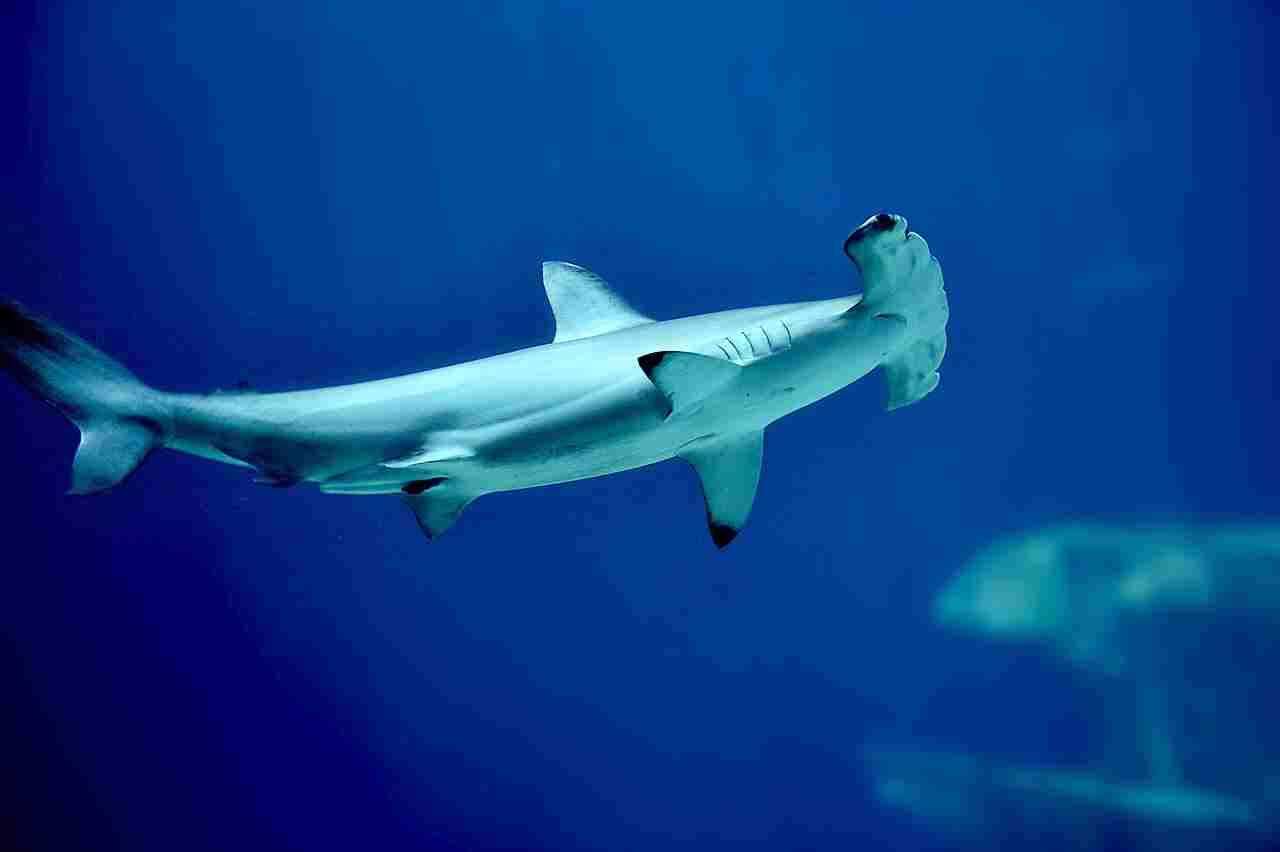
3). Large Squid
Large squid are tertiary consumers in the ocean ecosystem.
These cephalopods are distinguished by their impressive size and predatory behavior. Using their long tentacles and sharp beak, they are capable of capturing and devouring a wide range of prey, including fish and smaller squid.
Large squid have notable camouflage abilities, allowing them to blend seamlessly into their surroundings and ambush unsuspecting prey. They are highly adaptable and can be found in various oceanic regions around the world.
4). Seabirds
Seabirds are another example of tertiary consumers in the ocean ecosystem. They rely on a diet of fish and other marine organisms to survive. With their streamlined bodies and powerful wings, seabirds are well-equipped for hunting and diving into the water to catch their prey.
Also, they have specialized beaks and sharp claws that enable them to snatch fish from the surface or plunge into the depths to catch their meals.
Seabirds play a vital role in maintaining the balance of the marine food chain, as they help control the population of smaller fish and contribute to nutrient cycling through their droppings. Their ability to travel long distances and navigate vast oceanic regions makes them important indicators of the health of marine ecosystems.
5). Seal
Seals are examples of tertiary consumers in the ocean ecosystem. These marine mammals are well-adapted to life both on land and in
water.
Seals are excellent swimmers, so that they are able to hunt for prey in the ocean depths.
Seals mainly feed on fish, such as herring and salmon, but they also consume squid and crustaceans. Their sharp teeth and strong jaws enable them to catch and devour their prey with ease.
As tertiary consumers, seals play a crucial role in maintaining the balance of the marine food chain. They also serve as a food source for larger predators, such as sharks and orcas, further highlighting their importance in the oceanic food web.
6). Sea Lion
Sea lions are tertiary consumers in the ocean ecosystem.
They possess significant agility both in the water and on land. Sea lions have a diverse diet which includes fish, squid, and crustaceans.
They play a crucial role in the marine food chain by regulating the population of their prey species. Sea lions are also preyed upon by larger predators such as sharks and orcas.
* Examples of Tertiary Consumers in an Ecosystem
Examples of tertiary consumers in an ecosystem include the gray wolf, the cougar, and the golden eagle.
In forests and tundras, the gray wolf is a tertiary consumer that plays a role in regulating the population of herbivores such as deer and elk. They are known for their predatory habits and are capable of taking down large prey. The gray wolf is an important part of the ecosystem as it helps maintain a balance in the food chain.
Similarly, the cougar is a tertiary consumer found in various ecosystems, including forests and deserts. They are skilled hunters and primarily prey on herbivores like deer, as well as smaller mammals. Cougars are solitary animals and their presence in an ecosystem helps control the population of their prey species.
In the tundra ecosystem, the golden eagle is a tertiary consumer that feeds on smaller mammals like rodents and rabbits. They are powerful predators with keen eyesight, allowing them to spot their prey from great distances. Golden eagles are an important part of the tundra ecosystem as they help control the population of their prey and contribute to the overall balance of the food chain.
* Examples of Tertiary Consumers in a Food Chain
Examples of tertiary consumers in a food chain can be found in trophic level 4. These organisms play a crucial role in sustaining the food chain by preying on lower consumers in levels 2 and 3. Some examples of tertiary consumers in a food chain include the jaguar, spotted hyena, Arctic wolf, sea lion, and bottlenose dolphin. These animals occur in food chains of various ecosystems where they act as high-level consumers.
The jaguar, for example, is a tertiary consumer found in the rainforests of South America. It preys on herbivores like deer and tapirs, which are considered secondary consumers. By controlling the population of these herbivores, jaguars play a vital role in the rainforest ecosystem.
Similarly, the spotted hyena is a tertiary consumer found in the savannahs of Africa. It primarily feeds on herbivores like zebras and wildebeests, which are secondary consumers. The presence of spotted hyenas helps control the population of these herbivores and ensures the overall health of the savannah ecosystem.
In the Arctic, the Arctic wolf is a tertiary consumer that feeds on smaller mammals like lemmings and Arctic hares. These smaller mammals are considered secondary consumers as they primarily consume plant material. The Arctic wolf’s predation on these secondary consumers helps maintain the balance of the Arctic ecosystem.
In marine ecosystems, sea lions and bottlenose dolphins are examples of tertiary consumers. Sea lions primarily feed on fish, while bottlenose dolphins feed on a variety of marine organisms, including fish, squid, and crustaceans. Their predation on these lower consumers helps regulate the population of these species and contributes to the overall vitality of the marine food chain.
Difference Between Tertiary and Quaternary Consumers
Differences between tertiary and quaternary consumers occur in terms of their relative size, trophic impact, food chain position, predation threat, and conditions of classification.
1. Relative Size(s) of Tertiary and Quaternary Consumers
Tertiary and quaternary consumers differ in terms of their relative size.
Quaternary consumers tend to be larger than tertiary consumers. For example, orcas, which are quaternary consumers, are larger than hammerhead sharks, which are tertiary consumers.
This difference in size is an important factor in understanding the roles these consumers can play in the ecosystem.
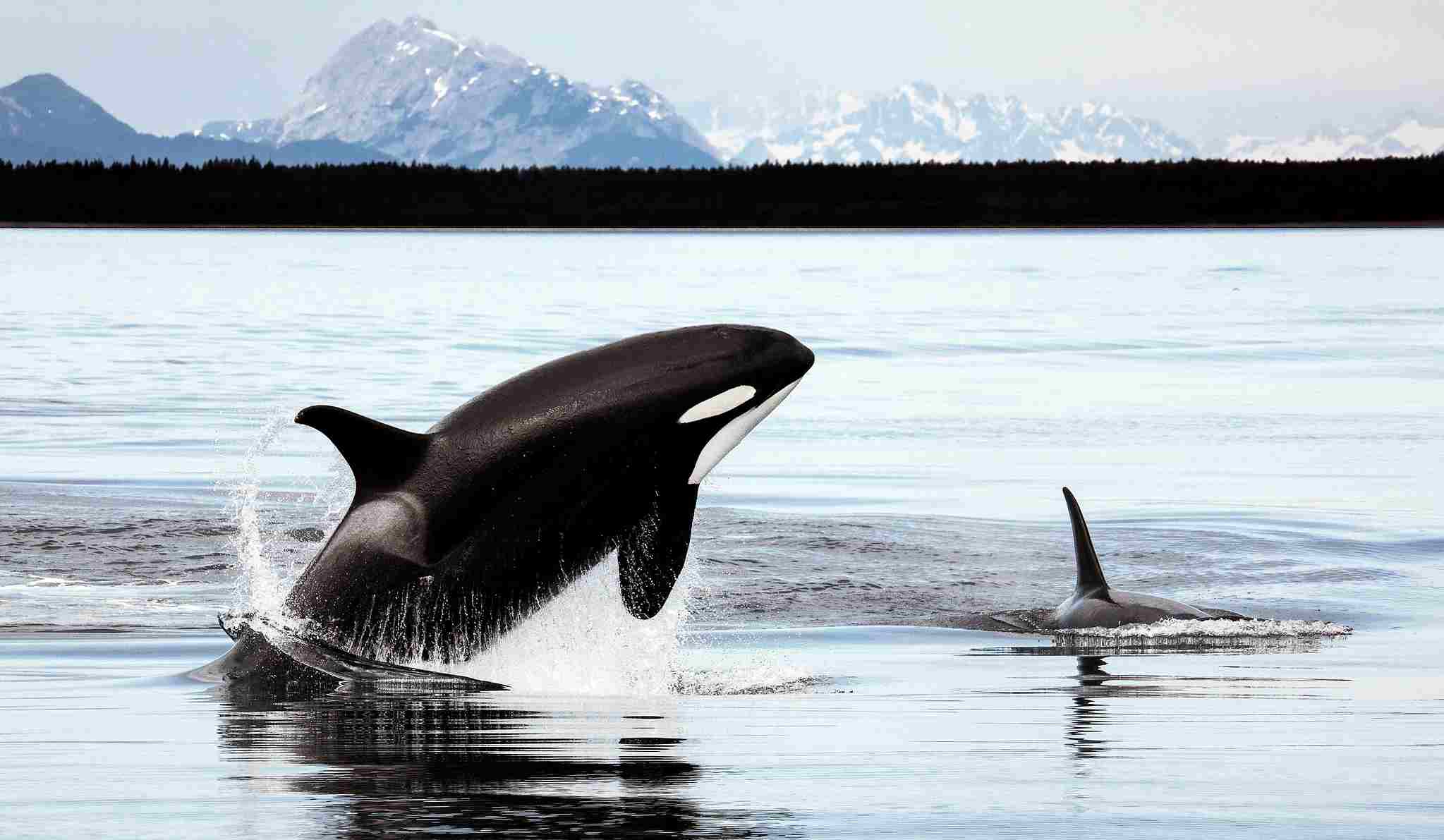
2. Trophic Impact of Tertiary and Quaternary Consumers
The trophic impact of tertiary and quaternary consumers is an important aspect to consider when analyzing the differences between these two consumer levels. Tertiary consumers, such as hammerhead sharks, occupy a lower position in the food chain compared to quaternary consumers. This means that their trophic impact is more localized and limited to the organisms they directly consume.
On the other hand, quaternary consumers, like orcas, hold a top position in the food chain. As a result, their trophic impact can have a cascading effect that reaches a broader range of organisms within the ecosystem. This is because the consumption of quaternary consumers can indirectly affect the populations of all lower trophic levels, including both tertiary and secondary consumers.
3. Food Chain Position of Tertiary and Quaternary Consumers
The food chain position of tertiary and quaternary consumers is an important factor to consider when comparing these two consumer levels. Tertiary consumers occupy the fourth level in the food chain, while quaternary consumers are at the fifth level.
At the tertiary level (4), organisms like large squid and seabirds primarily feed on secondary consumers, such as small fish and crustaceans. They play a crucial role in controlling the population of these lower trophic levels and maintaining the balance of the ecosystem. Tertiary consumers are an essential link in the transfer of energy and nutrients through the food chain.
On the other hand, quaternary consumers (in level 5), like orcas, occupy the highest position in the food chain. They feed on tertiary consumers and have a significant impact on the entire ecosystem. As top predators, quaternary consumers regulate the population of lower trophic levels, including tertiary and secondary consumers.
4. Predation Threat of Tertiary and Quaternary Consumers
Tertiary consumers, such as large squid and seabirds, face a predation threat from quaternary consumers. While tertiary consumers generally do not have natural predators, they may become prey to quaternary consumers due to intense competition for resources, or food scarcity. This competition can lead to a higher risk of predation for tertiary consumers.
On the other hand, quaternary consumers have no predators and face hardly any predation threat under all circumstances. As top predators in the ecosystem, they are at the highest level of the food chain and have minimal risk of being preyed upon.
Analyzing the differences between tertiary and quaternary consumers, it is evident that the predation threat varies significantly. Tertiary consumers are vulnerable to predation from quaternary consumers, while quaternary consumers occupy a position of absolute dominance and face minimal predation threat.
5. Classification Conditions of Tertiary and Quaternary Consumers
Classification conditions for tertiary and quaternary consumers depend on the characteristics of the ecosystems they inhabit. Tertiary consumers, such as bottlenose dolphins and hammerhead sharks, are found in most unfragmented natural ecosystems. They play an indispensable role in maintaining the balance of the food chain by regulating the population of lower consumers.
On the other hand, the classification of quaternary consumers is only possible in ecosystems with high species richness and biodiversity, that allow for the inclusion of a fifth trophic level. These ecosystems have several organisms present, allowing for the existence of several top-level predators.
Analyzing the differences between tertiary and quaternary consumers, it becomes clear that their classification conditions vary. Tertiary consumers can be found in a wide range of ecosystems, while quaternary consumers are limited to ecosystems with high species diversity.
FAQs
1. What are 10 Examples of Tertiary Consumers?
Here are 10 examples of tertiary consumers:
1. Lions
These majestic predators primarily feed on herbivores such as zebras and wildebeests, making them tertiary consumers in the African savannah ecosystem.
2. Wolves
As top predators in various ecosystems, wolves prey on herbivores like deer and elk, establishing their role as tertiary consumers.
3. Killer Whales
These apex predators feed on a variety of marine mammals, including seals and sea lions, placing them at the top of the food chain in the ocean.
4. Hawks
These birds of prey hunt small mammals, reptiles, and other birds, making them tertiary consumers in various ecosystems.
5. Sharks
With their sharp teeth and powerful jaws, sharks feed on a range of marine animals, including fish and seals, earning their place as tertiary consumers in the ocean.
6. Eagles
These large raptors hunt small mammals, fish, and other birds, supporting their position as tertiary consumers in many ecosystems.
7. Polar Bears
As the largest land predators, polar bears primarily feed on seals, classifying them as tertiary consumers in the Arctic food chain.
8. Crocodiles
These reptiles are opportunistic predators, feeding on fish, birds, and mammals, making them tertiary consumers in freshwater and estuarine ecosystems.
9. Spotted Hyenas
These scavengers also hunt and kill their prey, including herbivores like wildebeests and zebras, making them tertiary consumers in the African savannah.
10. Pythons
Many large snake species are tertiary consumers, preying on small mammals, birds, and reptiles, playing a vital role in various ecosystems.
2. Who are Tertiary Consumers?
Tertiary consumers are predatory heterotrophic organisms that occupy the fourth level of the food chain. They are organisms that can feed on secondary consumers, which in turn feed on primary consumers.
These organisms play a crucial role in maintaining the balance of ecosystems by controlling the population of lower trophic levels. Tertiary consumers can be found in various ecosystems, including terrestrial and aquatic environments. They are often apex predators, meaning they have no natural predators themselves. Examples of tertiary consumers include lions, killer whales, and eagles.
These organisms have adapted to be efficient hunters and have specialized characteristics that enable them to capture and consume their prey effectively.
3. What is an Example of a Primary, Secondary, and Tertiary Consumer?
Examples of primary, secondary, and tertiary consumers are mouse, weasel, and wolf respectively.
A primary consumer is an organism that directly feeds on producers, such as plants or algae. An example of a primary consumer could be a mouse that eats grass or seeds.
A secondary consumer is an organism that feeds on primary consumers. In this case, a weasel that preys on mice would be considered a secondary consumer.
Lastly, a tertiary consumer is an organism that feeds on secondary consumers. A wolf that hunts and feeds on weasels would be an example of a tertiary consumer.
These examples illustrate the different levels of the food chain and the relationships between organisms. Primary consumers rely on producers for energy, while secondary consumers depend on primary consumers. Tertiary consumers occupy the top of the food chain and play a crucial role in regulating populations of lower trophic levels.
4. Is an Eagle a Tertiary Consumer?
Yes, an eagle can be considered a tertiary consumer. Eagles are large birds of prey with a significant size and predatory capacity compared to other raptors.
They occupy the top of the food chain in various ecosystems, including forests, grasslands, tundras, and even deserts. As tertiary consumers, eagles feed on secondary consumers, such as smaller birds, mammals, and reptiles.
Their diet consists mainly of other animals, making them an important part of the ecosystem’s trophic structure.
